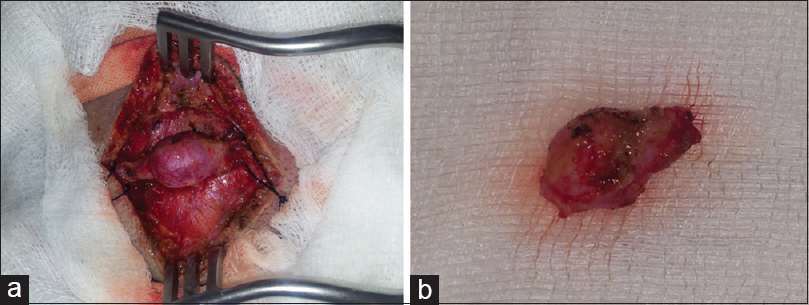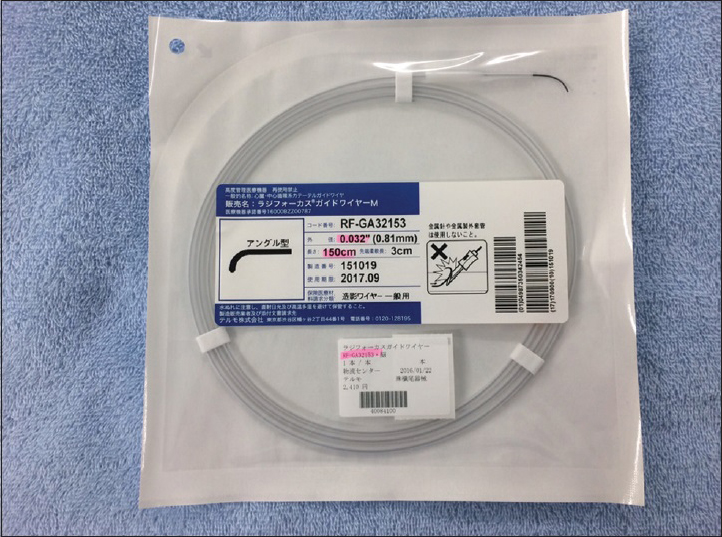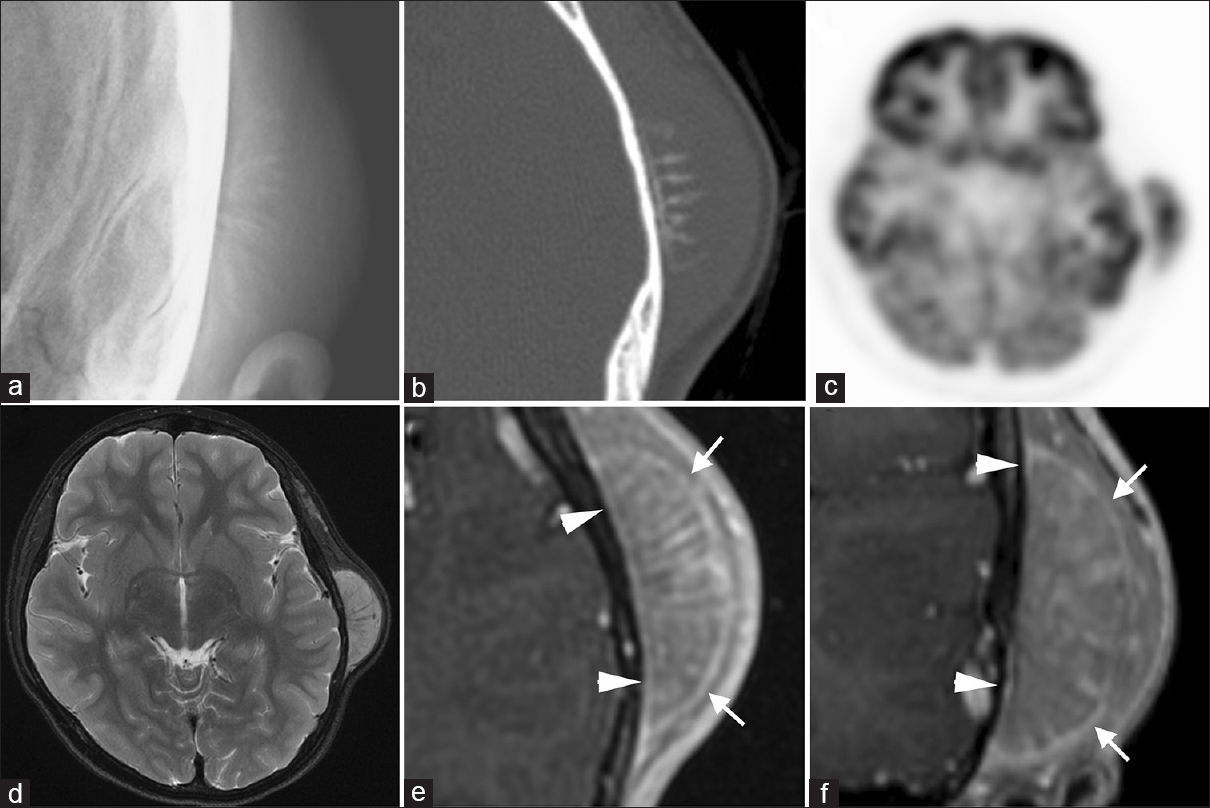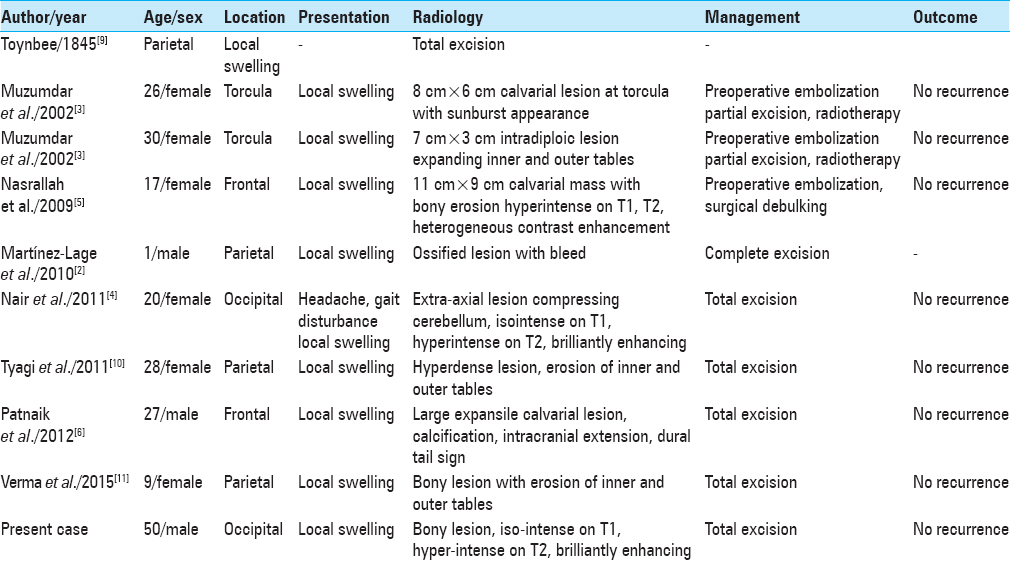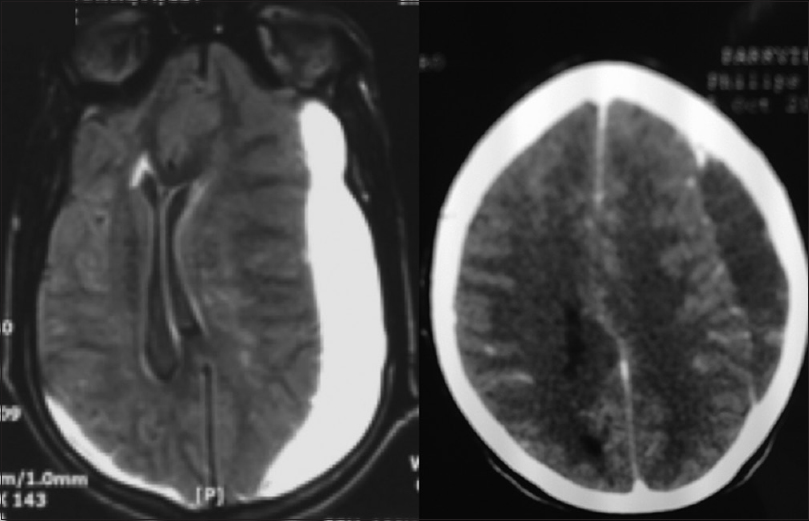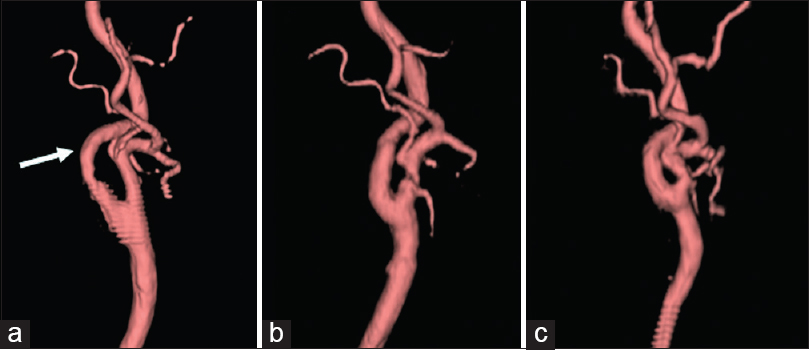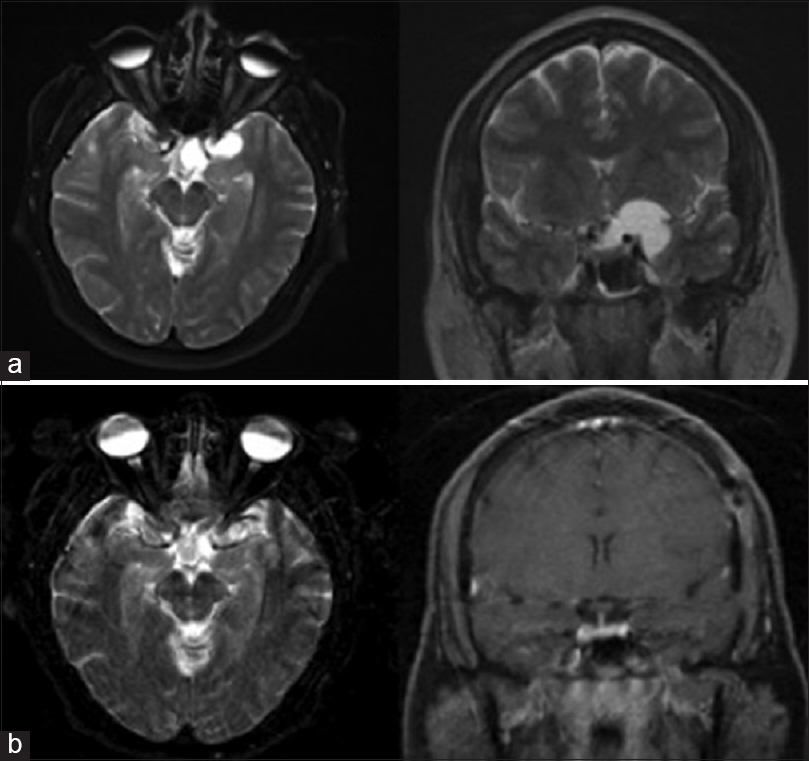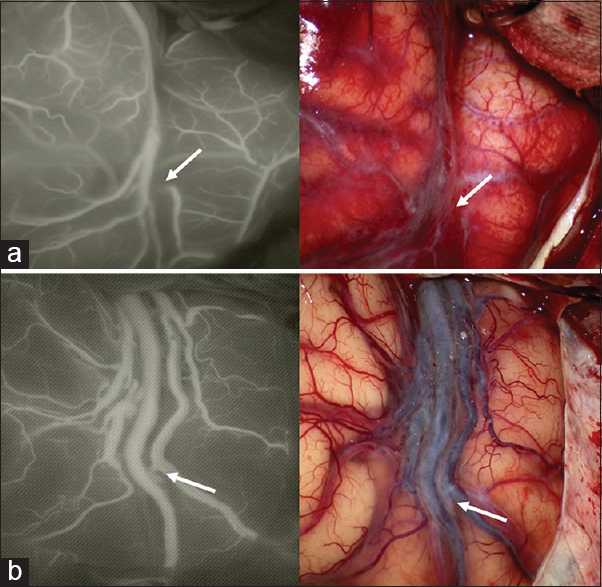Superficial temporal artery pseudoaneurysm presenting as a growing, pulsatile, and tender mass
Date of publication: 17-Jun-2016
Background:Superficial temporal artery (STA) pseudoaneurysms have been reported in the literature since the mid of seventeenth century from Bartholin, however, there is an increasing number of cases, suggesting a diversity of etiological factors. Among these, traumatic events, even of an iatrogenic nature, have been identified as causative factors for nonspontaneous STA pseudoaneurysms. Regional pain and tenderness, troublesome pulsations of the mass, cosmetic concerns as well as the risk of bleeding warrant a thorough evaluation and a definite interventional approach to the condition.
A rare intracranial tumor consisting of malignant anaplastic and papillary meningioma subtypes
Date of publication: 09-Jun-2016
Use of the guidewire for repositioning displaced spinal catheter during lumboperitoneal shunt placement
Date of publication: 06-Jun-2016
Background:During lumboperitoneal shunt operation, we may inadvertently pull and displace the spinal catheter after the catheter placement into the spinal canal. The authors introduce an easy and efficient technique for repositioning a prolapsed catheter into correct place.
Primary pericranial Ewing's sarcoma on the temporal bone: A case report
Date of publication: 03-Jun-2016
Background:Primary Ewing's sarcoma originating in the pericranium is an extremely rare disease entity.
Giant primary calvarial hemangioma over torcula: Radiological features and operative nuances
Date of publication: 03-Jun-2016
Background:Although rare, primary calvarial hemangioma is a known entity, surgical excision of which usually results in massive blood loss. Successful total excision of such a lesion remains a challenge, especially when these are in close vicinity of major venous sinuses.
Spontaneous chronic subdural hematomas in human immunodeficiency virus-infected patients with normal platelet count and no appreciable brain atrophy: Two case reports and review of literature
Date of publication: 03-Jun-2016
Background:Chronic subdural hematomas (CSDHs) usually occur in elderly patients following minor head trauma. Their occurrence is usually linked to cerebral atrophy secondary to alcohol, old age, or human immunodeficiency virus (HIV) infection. Spontaneous CSDHs have also been documented but are rare. They are usually caused by coagulopathies and various pathologies resulting in intracranial hypotension.
The use of fibrin and gelatin fixation to repair a kinked internal carotid artery in carotid endarterectomy
Date of publication: 03-Jun-2016
Background:The kinking of the internal carotid artery (ICA) after final closure in carotid endarterectomy (CEA) is thought to be uncommon. When it occurs, it is mandatory to reconstruct ICA to preserve normal blood flow. We herein present a case in which a fixation technique was applied to repair an ICA that became kinked during CEA.
A refractory arachnoid cyst presenting with tremor, expressive dysphasia, and cognitive decline
Date of publication: 03-Jun-2016
Background:Arachnoid cysts are common incidental findings on intracranial imaging, although they are rarely symptomatic.
Safe and accurate sylvian dissection with the use of indocyanine green videoangiography
Date of publication: 03-Jun-2016
Background:Sylvian dissection is an essential microneurosurgical skill for neurosurgeons. The safe and accurate opening of the sylvian fissure is desirable for a good prognosis.


